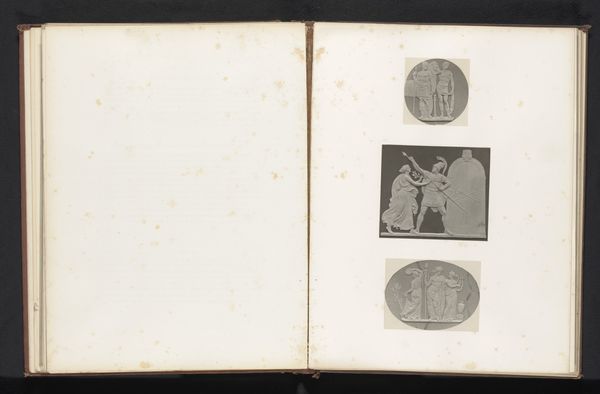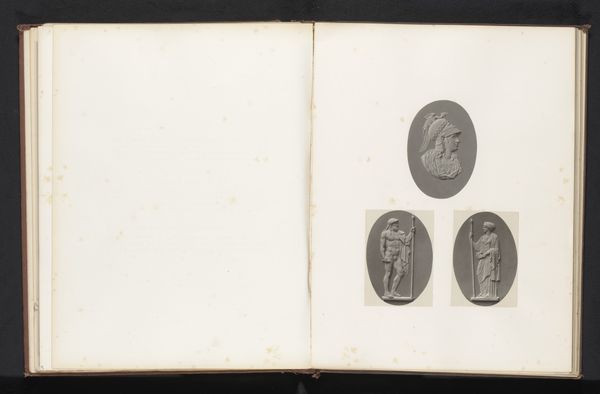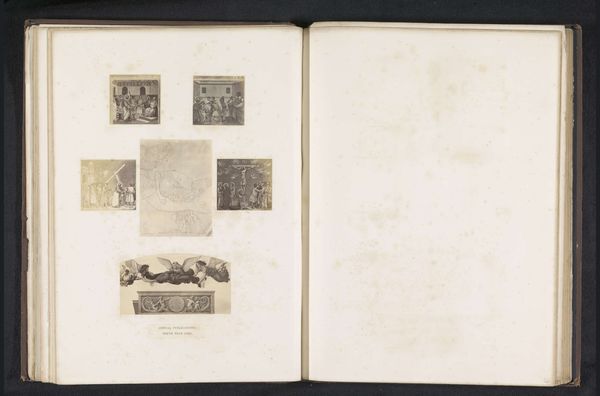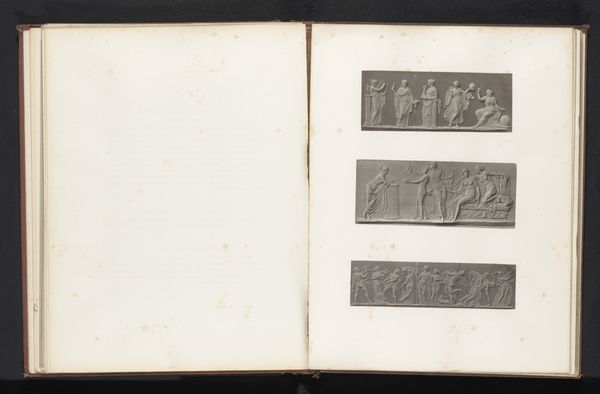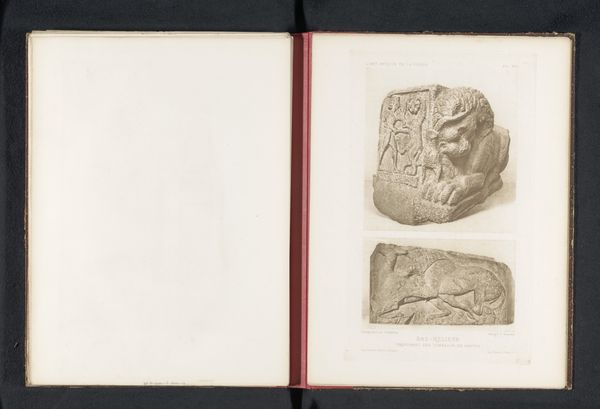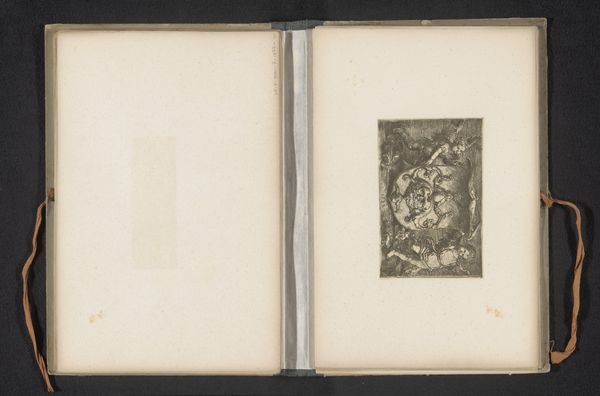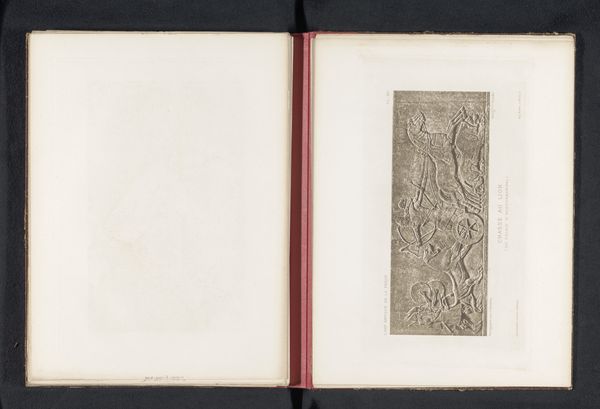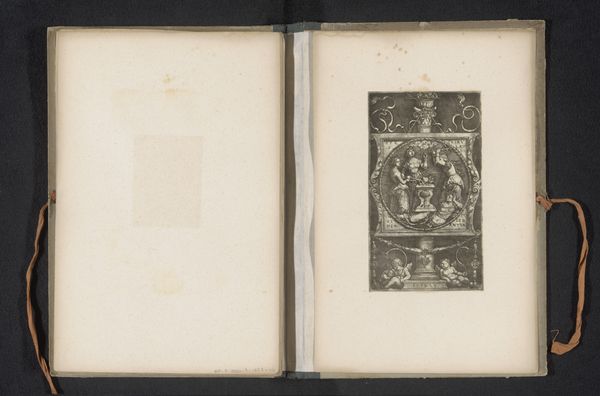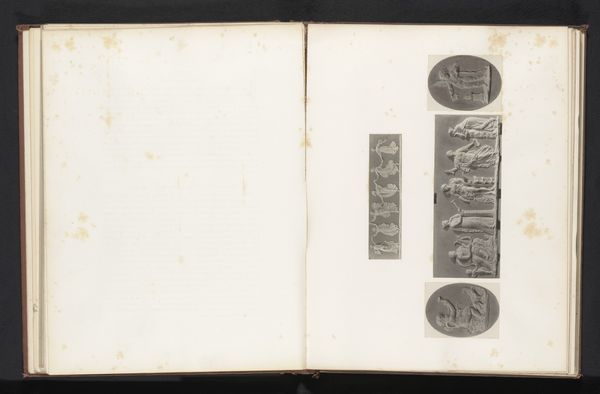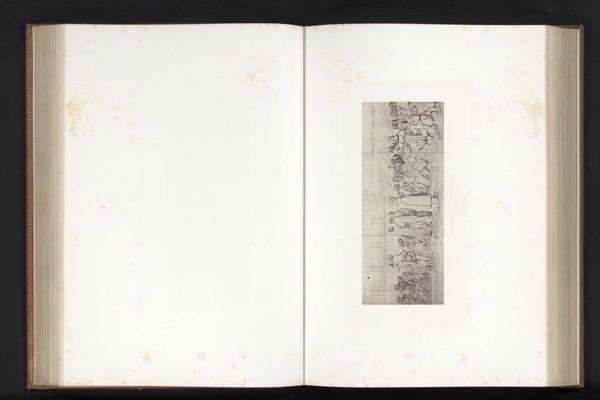
Bas-reliëfs van de apotheose van Homerus, de apotheose van Vergilius en Orestes met Pylades before 1873
0:00
0:00
drawing, print, relief, sculpture, marble
#
drawing
# print
#
relief
#
sketch book
#
ancient-mediterranean
#
sculpture
#
history-painting
#
marble
Dimensions: height 361 mm, width 270 mm
Copyright: Rijks Museum: Open Domain
Curator: Here we have what appears to be a page from a sketchbook by Joseph Cundall, dating from before 1873. The page features drawings, potentially prints, depicting bas-reliefs in what seems to be marble sculpture. The scenes portray, as the title suggests, "Bas-reliefs van de apotheose van Homerus, de apotheose van Vergilius en Orestes met Pylades.” What are your initial thoughts? Editor: The first thing that strikes me is the ordered arrangement juxtaposed against the worn quality of the sketchbook page itself. The tight compositions of each relief within rigid rectangular borders stand out sharply from the stained and aged paper. There's an almost classical rigidity about the whole page. Curator: Indeed. These classical themes speak volumes about the aspirations of the period. Apotheosis, the elevation to divine status, was a common motif for celebrating cultural heroes, connecting them to a lineage of greatness and embodying lasting values. Think of Homer and Virgil as cornerstones of Western literary tradition. Their apotheosis reinforces their influence. Editor: The symbolism certainly points to a deep reverence for classical antiquity. But, looking closer, the shallow depth of the reliefs themselves seems to flatten the scenes. There's a lack of dramatic chiaroscuro. It feels almost academic, lacking the emotional punch one might expect from such elevated subjects. Curator: That's a very keen observation. But consider the function these might have served: didactic perhaps, or as preparatory sketches for larger works. The clarity of line and form is prioritised over dramatic effect, making them legible and reproducible. The figures, although somewhat idealized, allow viewers of the time to recognize and perhaps aspire to embody these revered individuals in their own lives. This connects directly to ideas of education and the passing down of cultural capital. Editor: I concede the point about legibility, and these works as an exploration for a further project. And your emphasis on the transmission of ideals explains much, but the restrained execution still suggests an aesthetic more interested in conveying an idea rather than igniting the passions that epic poetry usually evokes. Curator: I agree. Though that might make some consider that it is effective! But it really brings a very unique light and experience when engaging with these reliefs through a more considered lens. Editor: I couldn't agree more! Understanding those details gives a rich perspective on appreciating these historical records and artworks in a completely different way.
Comments
No comments
Be the first to comment and join the conversation on the ultimate creative platform.
